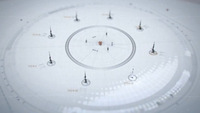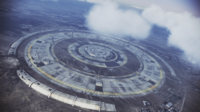Part 12: Mission 12 – Operation Stone Crusher, April 2nd, 2005
Stonehenge OffensiveMission 12: Operation Stone Crusher – April 2nd, 2005
Overview: Using the intel provided by the defecting Stonehenge engineers, ISAF is able to formulate a new strategy to penetrate rail gun network’s defenses. With Istas Fortress and Los Canas back under FCU control, ISAF launches a massive airstrike against the Stonehenge Turret Network, with Mobius 1 at the tip of the spear. If Stonehenge is destroyed, ISAF will regain control of the skies over Usea.
Meanwhile, in San Salvacion, the Resistance deals a crippling blow to Yellow Squadron with a deadly act of sabotage.

Guest Commentator: Today I am joined once again by my near-continuous LP partner in crime (Blind Sally excluded) CJacobs. Having just wrapped up co-LPs of The Evil Within and Resident Evil 4, he has now begun work on an LP of the Stephen King-inspired horror game Alan Wake along with fellow Ace Combat alum Skippy Granola.

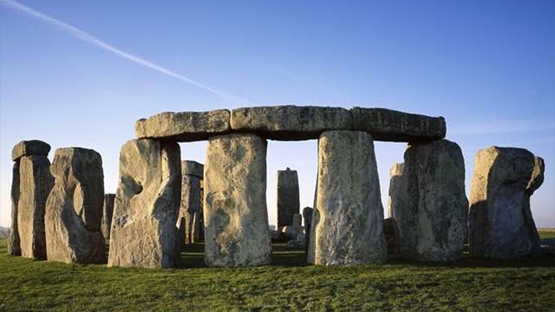
STONEHENGE
As noted in the video, Stonehenge, the megalith, is one of history’s most enduring architectural mysteries, and the subject of much debate, speculation, mythmaking, and just flat out lies as to its purpose, its method of construction, and just who built it. Located just outside of Amesbury, England, the site has been officially denoted as UNESCO World Heritage site and is actual owned and maintained by the government of England itself.
Stonehenge has many conflicting etymologies, but many of them work out incredibly roughly to suggest “Stonehenge” basically means “hanging stones.” People have taking this literally in both directions, regarding the seemingly suspended nature of several of the stones in the megalith, and suggesting that the site was once also used as a gallows for hangings. In its earliest incarnation, it was thought to be a burial ground, as human remains dating back to before the megalith’s erection have been recovered from the site.
The Stonehenge we know in the modern era is actually the seventh incarnation of the stone circle. Each successive generation of Stonehenge (numbered 1, 2, and then 3-I to 3-V) added a new layer of complexity to the site, though most of the traces of the first two generations have been lost to the decay of time. Only the ruins of Stonehenge 3 remain. A sister site, called Woodhenge stands 2 miles north-east of Stonehenge. Theories abound on the relation between Stonehenge and Woodhenge, suggesting a symbolic representation of the transition between with life and death and what would have been a ritualistic pilgrimage between the two sites on the night of the sunset of the Winter Solstice. The keystone of the Stonehenge site is aligned near-perfectly with the angle of the sunset on December 21st, just as a matter of reference.
Stonehenge also has a connection to the Arthurian Legend, which allows us to very briefly dip back into Ace Combat Zero territory and put our HEY GUYS DO YOU KNOW ABOUT KING ARTHUR?!!
 hats back on.
hats back on.According to Geoffrey of Monmouth’s History of the Kings of Britain, Stonehenge was constructed by Merlin and Uther at the behest of King Ambrosius Aurelianus, who wished a monument be constructed to honor the deaths of 3,000 soldiers who fell in battle against the Saxon hordes. Now the thing was, Stonehenge was already constructed at the time… in Ireland. It had been built by the giants, who hauled the stones up from Africa and planted them in the ground at Mount Killaraus. So Uther and Merlin decided they were gonna steal it and give to Ambrosius as a gift. Because, as we remember from that whole “let’s play dress up and seduce your future wife away from her soon-to-be-ex-husband via rape” thing that resulted in Arthur’s birth, Uther and Merlin were a pair of HUGE assholes. So with the help of 1,500 of Uther’s soldiers, Merlin’s magic and inventions, and a whole lot of dead innocent Irish, they packed up Stonehenge and moved it to England.
Beyond that, Stonehenge has appeared in a vast number of works of fiction. It is the site of the climax of Thomas Hardy’s Tess of the D’Urbervilles, where Tess makes her final stand as a grand fuck you to the world that basically destroyed her before the cops take her off to the klink. It has been referenced and parodied in countless works of fiction (like Ace Combat). There is, I’m not kidding, an accurate recreation of the stone circle in Alliance, Nebraska made entirely out of automobiles called “Carhenege.” And in the realm of music it also led to a bit of hilarious rock history minutia. Black Sabbath had an instrumental track on their album Born Again called “Stonehenge,” which ultimately lead their manager, Don Arden, to suggest that the band use a recreation of Stonehenge as a stage backdrop for their tour for the album. Ozzy and the boys loved the idea, but when the plans for it were drawn up, they were mistakenly labeled in meters, instead of feet, so that when the set was assembled, it stood three times taller than it otherwise should have.
This famous mixup was parodied in the mockumentary This Is Spın̈al Tap, where the boys from Tap, who also have a song called “Stonehenge,” are also talked into having a Stonehenge replica on stage for their tour by their manager. Only, the inverse occurs, and instead of feet, the plans are labeled in inches, resulting in a comically tiny stone arch.
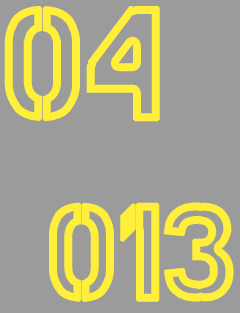
NUMEROLOGY
With the death of Yellow 4 in this mission, we have to sort of address the elephant in the room at play here with the Erusean characters in 04, which is of course numerology. For people who have even a passing familiarity with Asian numerology and numerical superstitions, they would have known Yellow 4 was a dead woman walking the second she entered the story as was identified as Yellow 4.
In the majority of east Asian languages descended from Chinese (including Japanese) the words for "four" (四) and "death" (死) are written differently but pronounced similarly, roughly as “shi.” It carries a similar superstation to the number 13 in western cultures. Buildings will often omit the number 4 to denote their fourth floor, opting for roundabout numbers like 3A or the letter F, groups of four are shunned or looked upon with suspicion, or are otherwise generically terrifying (see: the Four Holy Beasts, the Four Heavenly Generals, the Four Horsemen of the Apocalypse, the Elite Four, and on and on).
This superstation continued in eastern fiction, and western fiction influence by eastern storytelling styles and tropes. In fact, there is a whole page of TV Tropes (where I liberally lifted material from because I’m lazy and this isn’t an academic setting so I can get away with straight plagiarism
 ) dedicated this peculiarity of numerological superstition. Basically anything with a number 4 on it or in its name is either going to die or cause someone else to die before the end of the story.
) dedicated this peculiarity of numerological superstition. Basically anything with a number 4 on it or in its name is either going to die or cause someone else to die before the end of the story.To take it even further, the ACES AT WAR 2019 lore book also reveals that the broken turret seen in this mission at Stonehenge is also the "number 4" railgun. So yet another instance of 4=death at play here.
Similarly, we should also keep a studious eye on Yellow 13 too. 13 is also crowned with a culturally unlucky number, this one with a lot of western hang ups, so we’re covering ALL our bases here. The origin of the “13 is unlucky” belief allegedly stems from an old 19th century belief that if 13 people are seated at a dinner table, then one of them will die before the year’s end—a belief which more than likely tracks back to the Last Supper in the New Testament, where Jesus had one final supper with his twelve disciples (meaning there were thirteen people at the table), and then died several days later after Judas betrayed him to the Romans and they crucified him.
Much like in Asia with the number 4, buildings in the west will often omit (acknowledging) their 13th floors. The superstitious wariness of Friday the 13th also allegedly stems from the realm of Norse Mythology (another stomping ground for Ace Combat), this time with a connection between Freyja and Loki. Loki was the 13th Aesir, and betrayed the others, repeatedly. Friday the 13th was considered unlucky because people believed bad things happened on that day because it was Freyja’s Day (Frey-day—Friday), and Freyja had a particular hatred for Loki and all things associated with him, such as the number 13. So it particularly incensed Freyja whenever her day fell on the day of the month associated with Loki, and people assumed that any catastrophe to befall people or things, major or minor on that day was the result of Freyja’s anger.
Watch out, Yellow 13.


TURNING POINTS
So this is officially, the halfway point of the game. Yes, numerically the halfway point was back in Mission 9, but this is the thematic halfway point of the game. If Act Two of the game was Deep Strike to Stonehenge Offensive, then everything from here forward is basically Act Three: our mad dash to the finish line.
With the loss of Stonehenge, Erusea has been pushed on the defensive and forced to retreat in a major way for the first time. For the first time since the start of the Shattered Skies crisis, the Erusean military has been pushed back within its own national borders. As ISAF continues to retake territory across Usea and restore control of the continent to the FCU government, the Eruseans have begun to heavily fortify their own national border to levels not seen since the Erusean Refugee Crisis of 2002.
To make matters worse, the death of Yellow 4 and the failure of Yellow Squadron to defend Stonehenge from ISAF has shaken the FEAF’s confidence in Aquila Flight, as well as the squad’s confidence in itself. Moreover, Mobius 1’s single-handed destruction of the rail gun network has now made him the hottest topic of conversation on both sides of the war. The front page of the Times of Usea Yellow 13 posts in the Sky Kid bar openly names Mobius 1 in its opening paragraph about Stonehenge’s destruction, meaning that just about all of Usea now knows the story of the ISAF’s greatest pilot. The ISAF troops now see him as an invincible hero, the great avenger in the skies. The Eruseans effectively see him as the Grim Reaper, Death in an F-22* (we’re getting there, but the point remains). And as for Yellow 13, the days of regarding Mobius 1 as a bemusing curiosity are over.
The next time they meet, one of them is going to die. And 13 doesn’t seem to care which one of them it is, so long as it’s a well-fought fight.
Now that Stonehenge has been taken out of the equation, the Eruseans have effectively ceded Delarus to the FCU and its allies. Their only major stronghold outside of the Erusean homeland still under occupation remains the city of San Salvacion. If ISAF can retake San Salvacion itself, they will have a major springboard into Erusean territory, and ultimately into the Erusean capital city of Farbanti on the west coast.
Plans for the liberation of the city are already being drawn up and preparations are being made. Both sides are painfully aware of how vital the inland metropolis is their war efforts, and that a massive battle for the city is now brewing.
With Stonehenge now gone, whoever controls San Salvacion by the end of summer wins the war.

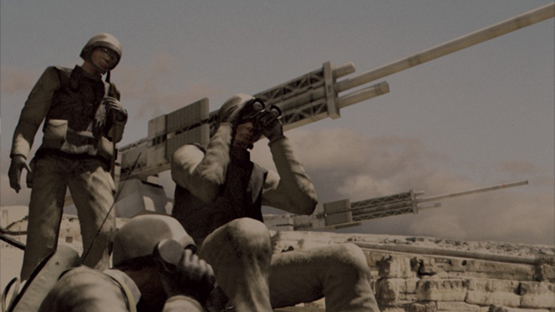
STONEHENGE
In the winter of 1995, when the existence of the Ulysses 1994XF04 asteroid and its collision course with Earth was revealed to the governments of the world, plans were hastily put into motion to ensure the survival of the human race from what was being doomsayed as an extinction level event. The first ones to come up with a viable solution were the Useans, who called a continental congress of all the nations of the continent to draw up plans for a Spaceguard countermeasure program to mitigate the inevitable damage from Ulysses’ planetfall, calculated to occur on July 3rd, 1999.
While the independent states focused on the construction of impact shelters in and around the metropolises of Usea, the FCU and Erusean delegations fought over a weapons system that would, in theory, be able to intercept incoming asteroid fragments and explosively reduce them to relatively harmless sizes before they did serious damage to populated areas.
The original proposal called for the construction of a chemical laser array similar to the old Excalibur Tactical Laser System build by the Belkans. However, those plans were hastily shot down when analysis showed multiple weaknesses and shortcomings in the TLS system when it came to asteroid interception. The Belkan laser was ultimately written off as an inviable curiosity—a testament to Belka’s engineering mastery, no doubt, but ultimately nothing more than a curious ahead-of-its-time dinosaur.
The final approved proposal instead consisted of a plan for an array of eight independently targetable railguns each mounted on massive turntables and counterweights to ensure for the largest possible firing arcs. The project was to be codenamed “Stonehenge,” after the old Neolithic stone circle and ANESCO World Heritage Site in the Kingdom of Sapin, believed by many to be associated with ancient astronomical-based druidic rituals. The final product of this development would be the Stonehenge Turret Network, or STN for short. The project would be headed up by rewound physicist and munitions expert Dr. Yang Tomic and overseen by the hastily assembled Central Usean Treaty Organization (UTO).
Among the Erusean delegation to the STN design bureau was physicist Dr. David Hartmann, a Belkan expat who became an Erusean citizen after leaving the Belkan Air Force following the signing of the Treaty of Lumen in 1995. Through his contacts in the BAF, Hartmann was able to provide the design board with plans from a proposal drawn up by the old South Belka Munitions Factory for a hybrid gunpowder-magnetic railgun from the controversial Project Pendragon, which produced the V2 nuclear MIRV and the still-classified ADFX-01 and 02 Morgan superplanes, among other weapons. (Partially unreacted documents suggest that the proposal was authored by Lorenz Riedel—now suspected by FCU Intelligence of working for the Estovakian government.) Though the proposal was rejected in its time for its unfeasibility, Hartmann argued that with the advancement of technology since the late 70s and early 80s, the designs could be easily adapted and upscaled to meet the needs of the potential Stonehenge railguns, an idea Director Tomic ultimately supported.
The UTO settled on an area of land south of San Salvacion in the Delarus Desert designated Area 26021-3 to be the construction site for both the STN complex and the adjoining FCU-operated Peterson Air Force Base. Numerous governments and corporations contributed to the construction and outfitting of the STN. Both the Osean Federation and the Union of Yuktobanian Republics initially came onboard as partners in the STN initiate, intending the STN site in Delarus to be the first in a series of facilities around the planet, but ultimately backed out of the project for economic and political reasons (bad blood between Osea and Usea still simmered over the botched Osean sublimation treaty that sparked off the Continental War).
Construction of the base facility of the STN was completed in June of 1998, as the Usean Continental War raged on around it. Construction of the actual railgun turrets would not be completed until well into early 1999, leaving precious little time for testing before Ulysses Day. When the IAU released an updated projection of the impact path of Ulysses fragments in June of 1998, it led to severe protests on Anea, which was now forecast to receive the blunt of the impact along with Usea and Wellow. By that point in its construction, however, no additional modifications could be made to the STN to extend its range beyond Usea.
The Estovakian government on Anea hastily scrambled to begin construction of its own spaceguard facility, codenamed “Chandelier,” but poor planning and construction and insufficient time to complete the project saw the facility fail spectacularly during its startup tests, leaving much of Anea utterly defenseless against Ulysses.
While Stonehenge performed admirably on Ulysses Day, it was far from perfect, and unable to prevent catastrophic destruction to key Usean cities such as Newfield Island, Saint Ark, and the Erusean capital of Farbanti, each of which suffered direct or glancing blows from asteroid fragments which Stonehenge failed to intercept. Even Stonehenge itself fell victim to Ulysses’ wrath, as one uncanny asteroid fragment managed to strike the STN complex while the turrets were focused on larger fragments, disabling the number four railgun, severing its counterweight gimbals and locking it in a straight vertical position. The disabled gun was ultimately left as-is rather than repaired, for political and economic rationales. The Erusean military later attempted to restore it to operational status, but abandoned the effort before making any significant headway.
Following Ulysses Day, the facility was placed in a semi-shuttered state by the FCU government. Thanks to the unusual political arrangements brokered by the UTO to facilitate its construction, Stonehenge existed in a troubling legal and political grey area which the FCU now had to contest with. While the facility remained operational in diminished capacity to intercept any Ulysses fragments still in orbit which could potentially fall to Earth, it was placed under heavy guard, lest it fall into the wrong hands. The STN design board had tried to have all data on its potential usage as a terrestrial assault weapon suppressed, but intelligence leaks saw this information slip out regardless—information that quickly found its way into the hands of the Erusean government.
And that’s how we got here.
On April 2nd, 2005, seven years after its initial construction, the Stonehenge Turret Network was destroyed in a massive assault upon the facility by ISAF and its Air Strike Team lead by Mobius 1. As the remaining seven railguns fell, and Yellow Squadron was driven off, the Eruseans quickly abandoned the facility as ISAF ground troops closed in to retake the complex and free the POW technicians, soldiers, and pilots who were being held at Peterson AFB next to the facility.
Rather than repair the complex to use against the Eruseans, the FCU ultimately decided to shutter Stonehenge completely. The cannons were left where they fell, though the vital components of their firing systems were removed or sabotaged so they could never again be used for war making purposes.
From that point forward, clean up of any remaining orbital or Trojan Ulysses fragments would be handled by a soon-to-launched orbital unit developed by the Osean Federation. A weapon codenamed “Arkbird.”
Stonehenge as a stage and enemy is a massive trend setter for Ace Combat, it is, in effect, the series’ first actual super weapon. It’s the first “boss” mission that really shows up in the series. Electrosphere experimented with certain elements of this, but it’s here in Shattered Skies where the formula is set in stone, as it were. Contrast this to what we saw in Zero with the Excalibur mission, or what we will be seeing down the line in 5, 6, X and 7. I said that Shattered Skies is where Ace Combat really becomes Ace Combat, and now we’re finally getting to see that in action.
Stonehenge is also one of the many setpiece missions remade for Ace Combat Infinity, the Free-To-Play game for the PlayStation 3 built off of Ace Combat: Assault Horizon’s engine.

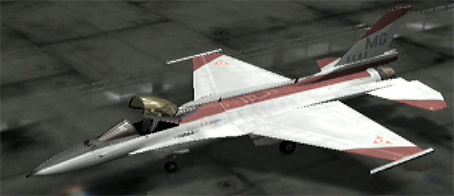
-
Urata
- Plane: F-2 Viper Zero
- Mission 12
- Spawn conditions: Appears north of Stonehenge near the far end of the map.
Kadorhal posted:
Ace Number Twelve is Urata. Named for Urata Takeshi, born sometime in 1947. Japanese astronomer who is, by far, the most-prolific namesake of this game's aces, with 641 asteroids discovered between 1978 and 2000. Particularly, in 1978 he became the first amateur astronomer to discover a minor planet in 50 years, 2090 Mizuho, which he named after his daughter. This feat lead to an upsurge of such discoveries, and within the next ten years another 160 minor planets were discovered by Japanese astronomers. He also co-discovered the comet 112P alongside Niijima Tsuneo in October 1986.
He was also an editor of the Japanese version of the Ephemerides of Minor Planets and shared observation data with other astronomers in a periodical named Tenkai (Japanese for "the Heavens"). The asteroid 3722 Urata, originally discovered in 1927 by Karl Wilhelm Reinmuth, is named after him. Died December 15, 2012, at around 65 years old, making him one of three namesakes that was definitely still alive when this game came out.
His paint scheme is another unique real-world one applied to the game - it's that of the first XF-2A prototype.

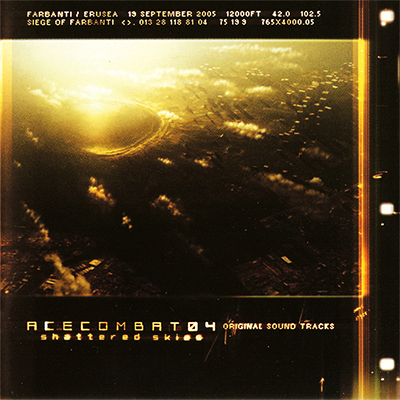
Tracks featured in Mission 12:
DISC 1

Stonehenge concept art and renders:


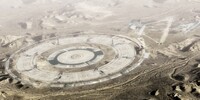
.jpg)
.jpg)
.jpg)
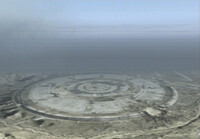
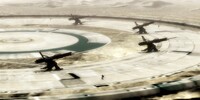
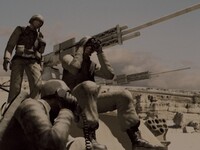
Stonehenge pages from ACES at War artbook:
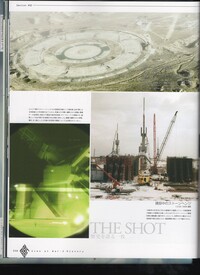
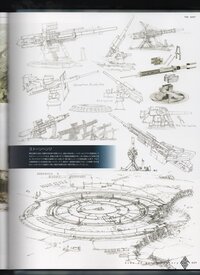
Stonehenge, as it appears in the Ace Combat 7 trailer:
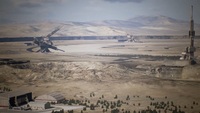
Stonehenge from Ace Combat Infinity:
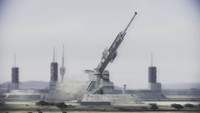
.png)
